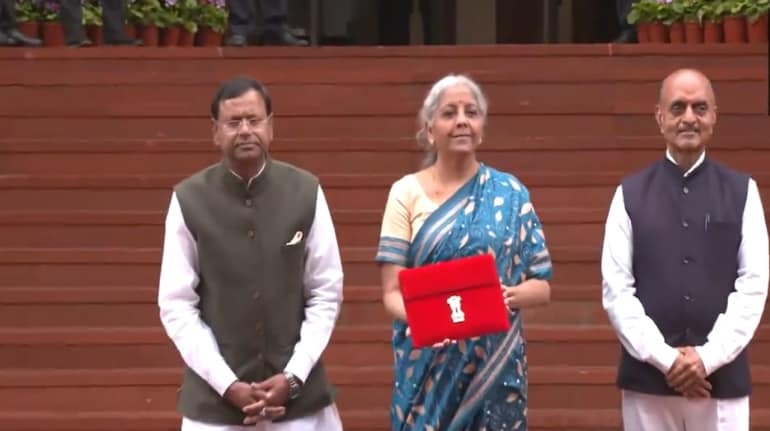Rating agencies and the central Bank expect India’s GDP to have grown 18-22 percent in Q1 FY22, but this is in comparison with a low base a year ago when economic activity was devastated by the pandemic-induced lockdowns

The share of agriculture in GDP shrinks while that of industry is supposed to increase.
The Centre is scheduled to declare the GDP estimates for the first quarter (Q1) of 2021-22 later in the day. The economy is expected to have clocked a record double-digit growth in the June quarter. However, the high growth would be in comparison with the April-June 2020 quarter last year, when the economy contracted 24.4 percent because of stringent pandemic-induced lockdowns.
Polls and predictions by several rating agencies and the central Bank predict that India’s GDP will grow 18-22 percent in Q1 FY22.The most optimistic forecasts have come from the Reserve Bank of India, which has projected a growth of 21.4 percent in the quarter.
Ratings agency ICRA has forecasted a 21 percent growth in the first quarter while SBI's Ecowrap has pegged the April-June quarter growth at 18.5 percent. The first quarter results slated to be released tomorrow, will be the official estimates offering an assessment of the damage caused by the second wave of the Covid19 pandemic which was said to be much more severe than the first wave.
Here are the key indicators to watch out for in the GDP data :
Agriculture: Agriculture has been the only saving grace in the economy in the previous quarters amid the dismal GDP performance of other sectors. In a way, India's agriculture sector saved the economy last fiscal. Growth in agriculture is expected in the first quarter but will it be able to offset the damage suffered by the other sectors because of the second wave of the pandemic.
However, growth in the farm sector could be slow as the infections had penetrated the rural areas during the second wave. Agriculture and allied activities had posted a growth of 3.4 per cent at constant prices in the first quarter of 2020-21. Farm sector growth in the first quarter of 2019-20 was 3 percent at constant prices.
Manufacturing: A major pain point for India has been the slow recovery of the manufacturing sector. Manufacturing contraction of 39.3 per cent in the first quarter (April -June) of last year from 3 per cent expansion in Q1 2019-20. The manufacturing sector finally bounced back 6.9 percent growth in the January-March (Q4) quarter of last fiscal. Manufacturing is expected to grow by a large margin in the first quarter of FY22 . The emergence of the second wave and restrictions by state governments had forced some units to shut down. But since the data will be calculated on the basis of April-June 2020 from a year back, it is expected to show a major growth.
Investment and Infrastructure: Investment and infrastructure growth which is reflected by Gross fixed capital formation (GFCF) is vital to kick off the cycle of job creation. GFCF was at 32 percent of the GDP in Q1 of 2019-20 but had dropped to 22.3 percent of GDP in the first quarter of last year. A pick up in the investment demand is crucial for the economic revival. Investment demand had been slowing even before Covid-19 struck India as overall economic growth slowed and the private sector lost confidence.
Consumption: Private Final Consumption Expenditure (PFCE) gauges household spending. In the first quarter of 2019-20, PFCE accounted for 56.4 percent of the GDP but it dropped to 54.3 percent in the April-June quarter of the last fiscal due to the first wave of the pandemic and the resultant lockdown in the country. It however improved to 55.4 percent of GDP in the last quarter of 2020-21. A fall in spending came on the back of massive job and salary cuts that occurred due to the lockdowns, prompting households to put off the purchases and save instead. With the devastation that the severe second wave exposed the economy to, household expenditure may continue to remain muted. Revival this segment is critical to India’s economic growth.
Services: Trade, hotel, transport, communication & services related to broadcasting is said to have borne the maximum brunt of the COVID-19 pandemic. The sector reported a massive contraction of 47.6 percent in the June quarter against a 3.5 percent growth in the corresponding quarter of 2019-2020. The sector did manage to narrow the contraction in the final quarter of 2020-21 by shrinking 2.3 percent. Just when the sector had started trotting back with the easing of restrictions, the second wave of the pandemic derailed the sector. To aid the sector in its recovery, the Centre on March 31 this year had extended the scope of the Rs. 3 lakh crore ECLGS to Hospitality, Travel and Tourism, Leisure, and Sporting sectors.India GDP: 5 things to watch out for in Q1FY22 GDP to be released today - Moneycontrol
Read More

No comments:
Post a Comment